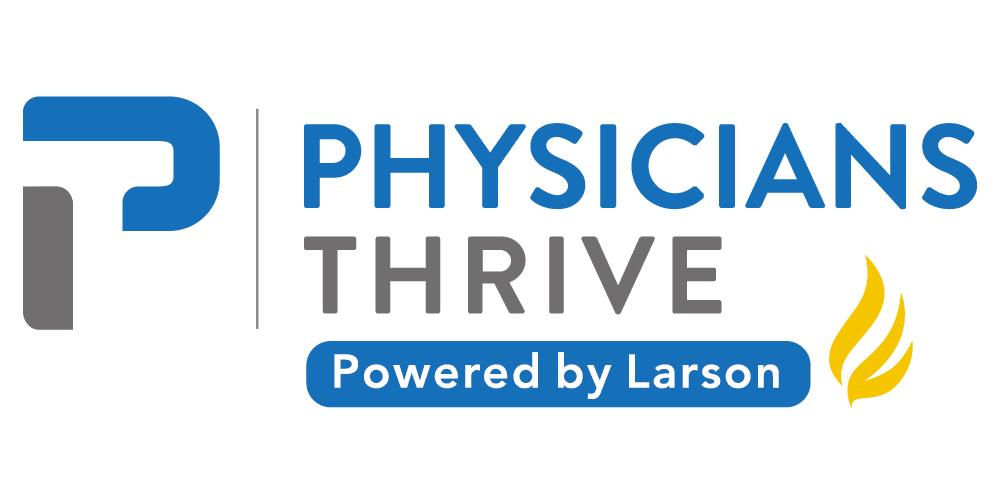As a physician in primary care or specialty care, there may come a time when you decide to go into business for yourself. One option is to open your own private practice so you can tend to patients in any way that you see fit.
Another option is to partner with other like-minded physicians and open a brand new group practice.
But for the physician that isn’t prepared to handle the complexities of starting a brand new medical practice, there is another option:
Buying into a practice that already exists.
Considering buying into an existing medical group?
From determining the valuation of a practice to understanding the compensation model, here’s what you need to know before buying in as a new partner in a private practice.
Table of Contents
What is a Private Practice Buy-In?
The private practice buy-in is a chance to become a partner in an existing, thriving practice. (Which is almost always easier than starting a new practice from the ground up).
It’s an opportunity to own a piece of a business without having to shoulder the responsibility of going into business on your own. It also offers you the ability to make decisions that you otherwise wouldn’t be able to make as an employee.
Employed physicians that want to buy into a practice should know that it won’t happen overnight.
In most cases, physicians must work as an employee of the practice for a period of two or three years before gaining the opportunity to buy-in as a partner. Opening a private practice will make you a business owner on day one. However, buying into an existing practice can take several years.
If there is a potential for a buy-in, your employment contract will detail some of the general terms. This may include how long you need to work as an employee or what benchmarks you need to reach before they’ll consider you a future partner/owner.
Buy-ins are available in both small and large group practices, and they’re a great way to own a piece of an already existing business over time. Most physicians will agree that it’s worth the wait.
According to the Medscape Physician Compensation Report 2021, employed physicians earn an average of $300k per year, while self-employed physicians that own their own practice or are a partner in a practice earn an average of $352k per year.
However, there’s a lot more to consider when buying into a practice than the potential to earn more money.
Things to Consider Before Buying Into a Practice
When buying into a practice, earning potential is just one of a variety of factors. Physicians need to consider many different elements in order to determine if a buy-in is a smart financial move.
Document Review
Buying into a practice requires a significant (and somewhat time-consuming) document review. The first step is to hire an attorney to perform a thorough document review for you.
Your attorney will need to review the existing bylaws of the practice. They’ll need to check the shareholders’ agreements. They will also determine if all shareholders or physician-partners have signed the same deal or if there are different terms for different partners.
In addition, your attorney will need to review the terms of your employment agreement and the buy-in agreement, including if there are buy-out terms should you choose to leave.
Corporate Governance
Corporate governance is how a practice runs its business, makes decisions, and dictates who is responsible for making those decisions.
Before buying into a medical practice, you’ll need to know precisely how they run their practice.
You’ll want to understand all aspects of its operations, including:
- Practice management
- Billing and coding
- Hiring
- How they provide patient care
Financial Statements and Cost Components
Before you agree to buy into a medical practice, you’ll need to look long and hard at all balance sheets and financial statements.
Here are a few of the cost components that can affect your buy-in price and help you determine if investing in the practice is a good decision or not.
Hard Assets
Everything the practice owns will be a factor in the purchase price of the buy-in. You’ll need to make yourself aware of every hard, tangible asset that the practice owns.
This includes everything from computer systems to office furniture, medical equipment to supplies.
Real Estate
If the practice owns its own building, your buy-in may mean that you’ll also be investing in a piece of real estate. Be sure to assess the property value of the building, know the equity of the real estate, and determine how much remains on the mortgage and how they make the payments.
In some agreements, buying into the practice’s real estate may be a completely separate option or not an option at all.
The Accounts Receivable
Depending on your buy-in agreement, you may or may not be responsible for purchasing the accounts receivable. The accounts receivable is the total sum of money that patients owe to the practice but haven’t yet paid.
If your agreement requires you to purchase the receivables, your buy-in price will be higher than if you don’t have to buy a portion of the yet-to-be-collected billings.
Book Value
The book value of a practice comes from subtracting the practice’s liabilities from its total assets. Also referred to as “equity,” the book value is key to determining the practice valuation.
If the practice you’re buying into is encumbered with malpractice damages or riddled with debt, the book value will reflect it.
Cash Flow
To determine cash flow, take the total revenue of a practice, subtract all business expenses, and add back in non-cash expenses, such as depreciation.
This figure is essential in determining if your buy-in price is of fair value.
Goodwill
In some cases, goodwill may also be a factor in your purchase price.
Goodwill refers to intangible items that don’t have a definitive value. Such as the practice’s reputation or its desirable location. It’s impossible to put a dollar amount on these items. Therefore, many practices choose not to include goodwill as a factor in the buy-in price.
If a practice expects you to pay for “goodwill,” it usually means they’re established as a high-quality healthcare provider in the community.
In a buy-in scenario, it’s crucial to have an attorney on your side to:
- Review documents
- Review the corporate governance of the practice
- Determine the goodwill factor
- Assess all financial statements and cost components
All these elements combined are critical in calculating the value of a practice and whether or not it’s a good investment.
Related: Why Doctors Should Consider Real Estate Investing
How to Determine the Valuation of a Practice
So how exactly do you determine the valuation of a practice?
You can use several formulas to help figure out if the purchase price of a medical practice buy-in is fairly valued.
Valuation With the P/E Ratio
One way to come up with the valuation of a practice is to look at its P/E ratio.
To calculate practice value using this method, take the buy-in price of the business and divide that by your estimated annual earnings. The lower the number, the faster you’ll be able to recoup your initial investment.
For example, let’s say you have the option to buy into a practice for $300,000.
As an employed physician in the practice, you can earn $200,000 per year. As an owner/partner, you can earn $300,000.
That means you can earn $100,000 per year extra for buying in. The P/E ratio for this would be $300,000/$100,000, so it would take you three years to recoup your initial buy-in investment.
The Discounted Cash Flow Method
The discounted cash flow method is one that many physicians use to determine the value of the practice. This method works by projecting out five to ten years of cash flow and then discounting those cash flows back to their present value.
To determine how much you should discount the cash flow, think about how much you hope to gain in the first ten years of your investment.
For example, if you’re looking to gain 15% over the first ten years of practice ownership, discount the projected cash flow by 15% to determine its present value.
The Comparable Sales Method
Using the comparable sales method to determine valuation is like buying real estate. It requires you to assess what other physicians, buying into similar practices in your region, paid for their buy-in. This is a great way to estimate if a valuation seems fair. Although, in order to do so, you’ll need to access the financial reports of other practices, and that information is rarely made public.
There are several ways to calculate the value of a medical practice. The method you should use depends on how the business is currently functioning.
For example, if it’s a new practice that’s growing rapidly, the earnings may be too low to use the P/E ratio effectively. The P/E ratio is more suitable for a more mature company with stable growth rates.
In most cases, physicians weighing the profitability of a practice buy-in use multiple valuation methods to determine if they’re paying a fair price.
Understand the Payment Structure
Concerned that you don’t have a lump sum of cash available to cover your ownership interest?
Don’t worry — most buy-in payments are spread out over time.
If your practice is incorporated, you’ll need to buy stock in the company. Keep in mind that, unlike stock purchases tied to retirement accounts, these stock purchases are not tax-deductible.
Rather than paying for the stock upfront, many physicians choose to have the amount deducted from their income and earnings over a period of several years. This allows you to make stock purchase payments with pre-tax dollars.
Most physicians opt to buy into a practice over a three to five-year period, sometimes referred to as an “inexact” or “phased-in” buy-in. With a phased-in buy-in, your ownership percentage increases as the phased-in period progresses.
For example, after three years, you may own 60% of your share; after four years, you may own 80%. It may very well take until year five to start enjoying all 100% of your share.
Ever wondered How Much Money You Need to Retire?
Understand the Compensation Model
Like payment structures, there are a variety of compensation models as well. The most common are the equal allocation model, the production allocation model, and the two-tiered allocation model.
The Equal Allocation Model
The equal pay compensation model is the most straightforward type.
In this model, every physician that has an equal ownership stake in the practice receives an equal share of the practice’s profits and revenue. In addition, every physician is equally responsible for covering the practice’s expenses.
This model works well when all partners feel that there’s an equal division of workflow and that everyone is equally productive. Conflict sometimes arises when partners feel that other partners aren’t pulling their own weight.
The Production Allocation Model
Under the production allocation model, a physician’s earnings depend strictly on how productive they are. Productivity can be based on RVUs, patient billings, billing collections, or a combination of the three.
This model is often adopted as a way to incentivize younger physicians to work as hard as they can to make the practice more successful.
The Two-Tiered Allocation Model
In some group practices, a set portion of the profits goes equally to shareholders, while the rest is based on production. This hybrid compensation model is one of the most common, as it’s a strong incentive to produce more yet still guarantees that owners will share some equal portion of payment.
These three compensation models aren’t the only options — some practices choose a multi-tiered approach instead.
The multi-tiered model is similar to the two-tiered allocation model but also compensates physician-partners based on seniority, credentials, and other factors.
Related: Budgeting 101 – How to Lower Administratie Costs in Your Practice
Is a Practice Buy-In the Right Move For You?
As a new physician, opening your own practice can seem daunting. Yet, working as an employee for a large healthcare organization almost certainly means you’ll earn less than if you work for yourself.
Buying into an existing practice is a great middle ground.
It affords you the chance to help decide how the practice is run and allows you to focus on providing high-quality medical care to your patients.
Weigh Your Options and Costs
There is no set price for how much a physician buy-in costs. It all depends on the valuation of the practice and how many partners or shareholders already exist. There is also no set startup cost for opening your own practice.
By buying into an existing practice, you won’t have to start a practice from scratch. However, building your own practice from the ground up provides greater autonomy and the opportunity to run your business exactly as you wish.
If you don’t want to open a business on your own, another option is to start a brand new company with other physicians who wish to work in a group practice. Networking through professional associations and sites such as LinkedIn is a great way to connect with physicians that could become potential partners.
Buying into an existing company is a great way to become an owner in a medical practice. Still, you’ll need to be diligent in getting an accurate valuation, understanding the payment structure, and agreeing to a comfortable compensation model.
For more guidance on buying into a practice or how to start your own, contact Physicians Thrive now.
Subscribe to our email newsletter for expert tips about finances, insurance, employment contracts, and more!










































